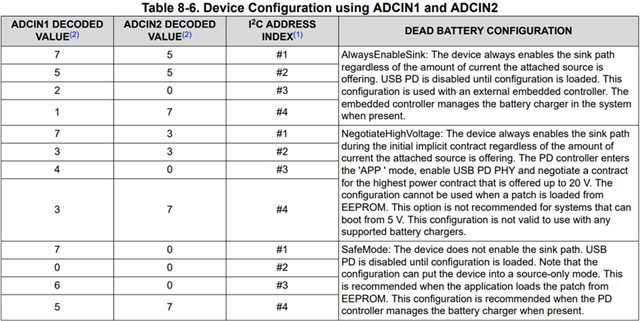Other Parts Discussed in Thread: BQ25756
Tool/software:
Hi! I was reading about the Power delivery controller and i was wondering which of these modes in a dead battery configuration will work best for my aplication. What would be the selection criteria between one mode or another? It's just i am having some trouble understanding the different modes.
Thanks in advance!


